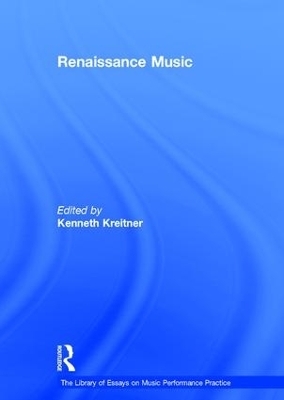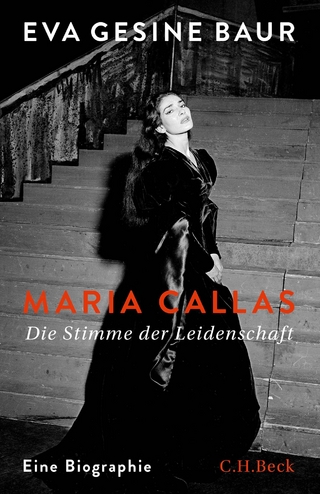
Renaissance Music
Routledge (Verlag)
978-0-7546-2963-4 (ISBN)
We know what, say, a Josquin mass looks like”but what did it sound like? This is a much more complex and difficult question than it may seem. Kenneth Kreitner has assembled twenty articles, published between 1946 and 2009, by scholars exploring the performance of music from the fifteenth and sixteenth centuries. The collection includes works by David Fallows, Howard Mayer Brown, Christopher Page, Margaret Bent, and others covering the voices-and-instruments debate of the 1980s, the performance of sixteenth-century sacred and secular music, the role of instrumental ensembles, and problems of pitch standards and musica ficta. Together the papers form not just a comprehensive introduction to the issues of renaissance performance practice, but a compendium of clear thinking and elegant writing about a perpetually intriguing period of music history.
Kenneth Kreitner is Professor of Musicology and Assistant Director for Graduate Curriculum & Advising at the University of Memphis, USA. A scholar of renaissance Spain, historical performance, and nineteenth-century American amateur bands, he is also an active performer on early brass and woodwind instruments and directs the University's Collegium Musicum, the professional Memphis Consortium for Early Music, and the nineteenth-century Phosphate Band. In 2007 he was named recipient of the Union Planters Benjamin W. Rawlins Jr. Meritorious Professorship. Presented by the College of Communication and Fine Arts, the award recognizes exceptional achievement in teaching, scholarship, service, and outreach. He also received the University of Memphis Alumni Distinguished Teaching Award in 2000 and the Robert M. Stevenson Award, for outstanding scholarship in Iberian music, from the American Musicological Society in 2007.
Contents: Introduction; Part I Method: On 'instrumental style' in early melody, Lloyd Hibberd; Specific information on the ensembles for composed polyphony, 1400-1474, David Fallows. Part II Songs: Going beyond the limits: experiments with vocalization in the French chanson, 1340-1440, Christopher Page; Performance practices in the frottola, William F. Prizer; The a capella heresy in Spain: an inquisition into the performance of the cancionero repertory, Tess Knighton; Tenorleid, discantleid, polyphonic lied: voices and instruments in German secular polyphony of the Renaissance, Stephen Keyl; Performance practice in the seconda pratticca madrigal, Rinaldo Alessandrini. Part III Sacred Music: The performing ensembles in Josquin's sacred music, David Fallows; Performance practice in the Papal chapel during the 16th century, Richard Sherr; The performance of Palestrina: some questions, but fewer answers, Graham Dixon; The performance of Palestrina: some further observations, Noel O'Regan; What can the organ Partitura to Tomás Luis de Victoria's Missae, Magnificat, motecta, psalmi et alia quam plurima of 1600 tell us about performance practice?, Noel O'Regan; Minstrels in Spanish churches, 1400-1600, Kenneth Kreitner. Part IV Instrumental Music: Voices and instruments: soloists and ensembles in the 15th century, Keith Polk; A Cook's tour of Ferrara in 1529, Howard Mayer Brown; Notes (and transposing notes) on the transverse flute in the early 16th century, Howard Mayer Brown. Part V Notation: Diatonic ficta, Margaret Bent; 'High' clefs in composition and performance, Andrew Johnstone. Part VI Perspective: Sight-readings: notes on a capella performance practice, Donald Greig; For whom do the singers sing?, Bonnie J. Blackburn; Series Bibliography; Name index.
| Erscheint lt. Verlag | 15.6.2011 |
|---|---|
| Reihe/Serie | The Library of Essays on Music Performance Practice |
| Verlagsort | London |
| Sprache | englisch |
| Maße | 174 x 246 mm |
| Gewicht | 1111 g |
| Themenwelt | Kunst / Musik / Theater ► Musik ► Klassik / Oper / Musical |
| Kunst / Musik / Theater ► Theater / Ballett | |
| ISBN-10 | 0-7546-2963-5 / 0754629635 |
| ISBN-13 | 978-0-7546-2963-4 / 9780754629634 |
| Zustand | Neuware |
| Haben Sie eine Frage zum Produkt? |
aus dem Bereich


